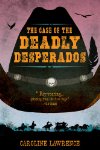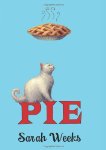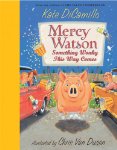Many years ago my mother bought me a used copy of Pippi Longstocking and I quickly fell in love with the quirky main character who was so very odd looking, and who did not seem to care about anyone's rules. Pippi was a law unto herself, and woe betide anyone who got in her way.
Some books are wonderful when you are a child, but when you reread them as an adult they seem to have lost their spark. This book is the kind of book that will charm children and adults alike. I think this may, in part, be because both children and adults sometimes wish that they could be Pippi Longstocking. Wouldn't it be grand to be able to do whatever you want?
Some books are wonderful when you are a child, but when you reread them as an adult they seem to have lost their spark. This book is the kind of book that will charm children and adults alike. I think this may, in part, be because both children and adults sometimes wish that they could be Pippi Longstocking. Wouldn't it be grand to be able to do whatever you want?
Astrid Lindgren
Illustrated by Michael Chesworth
Fiction
For ages 8 to 12
Penguin, 2005, 978-0142402498
Annika and her brother Tommy are terribly good children who always do as they are told, who are always clean, and who are wonderfully polite. They are also often bored and lonely. If only they had someone to play with. If only someone with children would move into the empty house next door.
Illustrated by Michael Chesworth
Fiction
For ages 8 to 12
Penguin, 2005, 978-0142402498
Annika and her brother Tommy are terribly good children who always do as they are told, who are always clean, and who are wonderfully polite. They are also often bored and lonely. If only they had someone to play with. If only someone with children would move into the empty house next door.
Then, one day, when they get back from a weekend away, the two children see that someone has moved in next door, and what a peculiar looking someone it is too. They see a little girl whose braids are so tight that they stand straight out from her head. Her dress is patched, and her shoes are enormous. It doesn't take them long to find that not only does the little girl look odd, but she also thinks, speaks and behaves oddly as well. What Annika and Tommy soon determine is that the little girl, Pippi Longstocking, is a most unusual and quite delightful person.
Soon Annika and Tommy are not the only ones to discover that Pippi is odd. Two tramps who think they can rob Pippi because she lives alone with only a monkey and a horse for company, quickly come to the conclusion that she is not an easy mark. A busybody trying to get Pippi to go to a children's home gives up, and as for making Pippi go to school – well, suffice it to say that one day with Pippi in the class is more than enough for the class teacher.
Pippi's deliciously funny tall tales, her generous spirit, her outrageous ideas and behaviour, and the little flashes that she lets us see of her inner self, all come together to make this a classic tale that has delighted children for decades. Though she is incredibly strong, independent and wilful, Pippi is also a motherless and fatherless child who at times mourns her parentless state, and she recognizes that she doesn't quite fit in. Her vulnerability makes us love her all the more because we see a bit of ourselves in her. We see that she is seeking love and a sense of belonging.



















